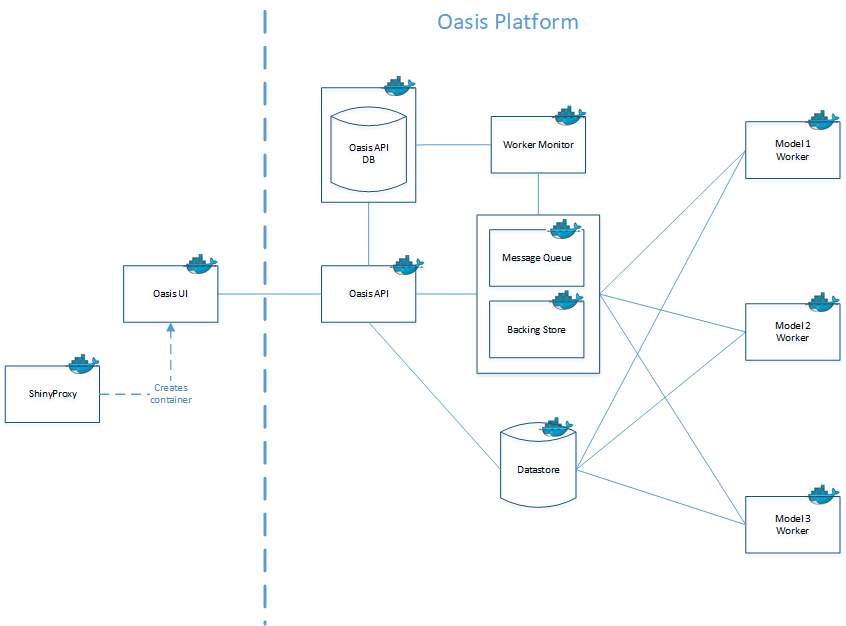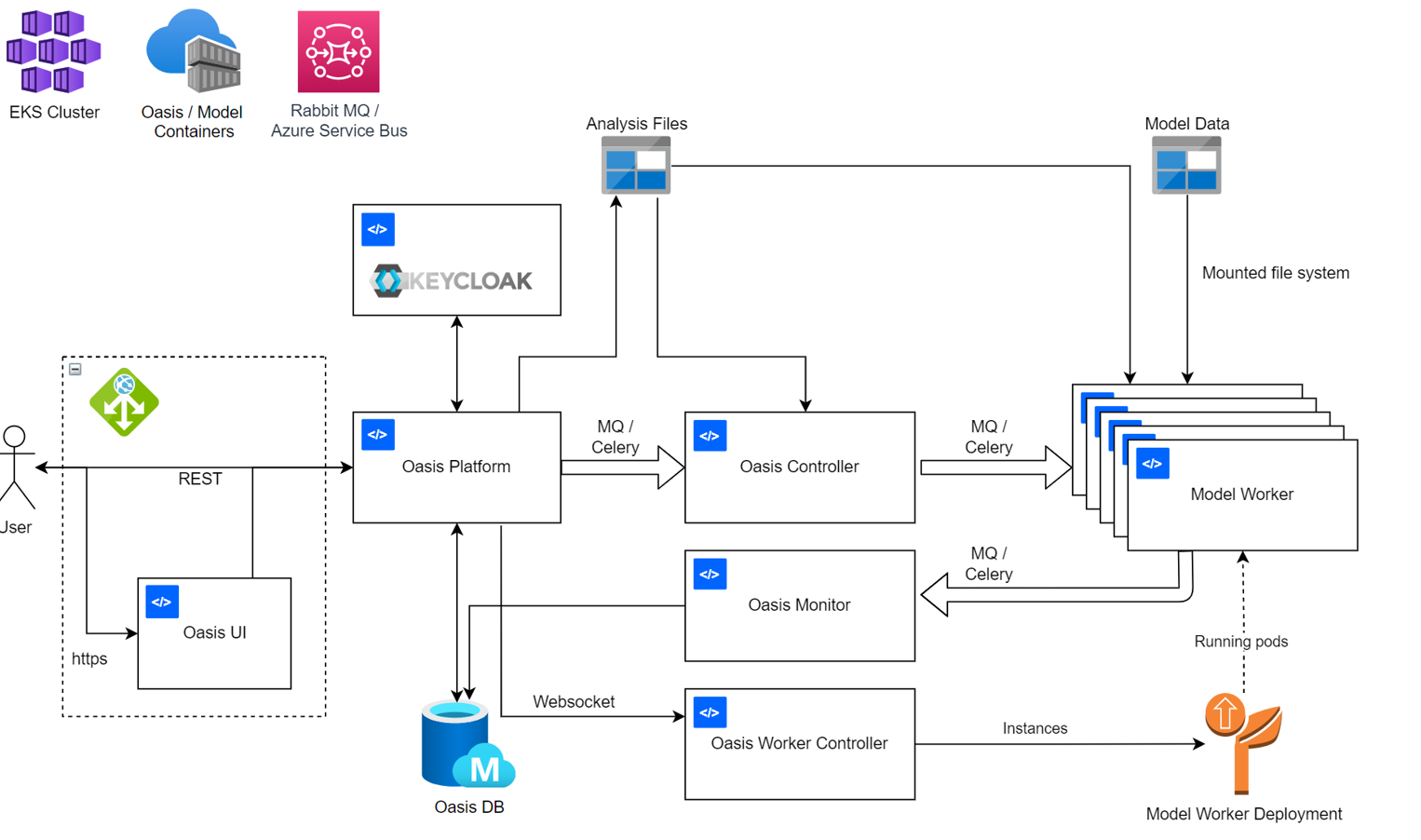API¶
On this page¶
Introduction:¶
An evaluation version of the Oasis platform and using can be deployed using the Oasis evaluation repository. This includes a Jupyter notebook that illustrates the basic operation of the API, using the Python API client.
The API schemas can be found here:
This is useful for more technical users who are looking to create their own UI or integrate Oasis with an existing system. The v1 schema hierarchy is shown in json format in right column of the page. An interactive version of the schema, with descriptions and examples, can be found below:
Oasis API¶
The Oasis Platform release now includes a full API for operating catastrophe models and a general consolidation of the platform architecture. Windows SQL server is no longer a strict requirement. The platform can be run via docker containers on a single machine or, if required, scaled up to run on a cluster.
Docker support is the main requirement for running the platform. A Linux based installation is the main focus of this example deployment. Running the install script from this repository automates install process of the OasisPlatform API v1, User Interface and example PiWind model.
The Oasis API is the components of the Oasis platform that manages all the elements of the plaform that are required to build, run, and test models. The diagram below shows how the Oasis API sits behind the Oasis UI, that you use to operate your catastrophe models.
Oasis docker componets:

API deployment in the Oasis Enterprise Platform¶
The Oasis Enterprise Platform is an open source Kubernetes based, cloud computing cluster, which is deployable in Microsoft Azure via Helm charts and Bicep scripts to setup the Azure cloud services. The diagram below sets out the Oasis Enterprise Platform architecture:

Links for further information¶
There is more information availible in the Oasis GitHub.
This includes detailed walkthorughs on:
Oasis implementation of Microsoft Azure.
This guide takes you through the requirements for using this platform, how to setup the enviroment, how to use the platform, how to manage resource groups, deployment without the pipeline, securing the plaform, troubleshooting, and it answers some additional questions about the design.
More information can be found here.
How to implement Kubernetes.
This guide takes you through requirements, how to build images, a quick start tutorial, how to access the user interfaces, and introduction to helm and customisation, chart details, and keycloak, and how to access help scripts.
More information can be found here.
How to deploy and manage the Oasis platform on a Kubernetes cluster.
More information can be found here.
Oasis Worker Controller.
This application controls the number of workers in a kubernetes cluster based on analyses currently running, worker deployments available and autoscaling configuration for each worker deployment.
More information can be found here.